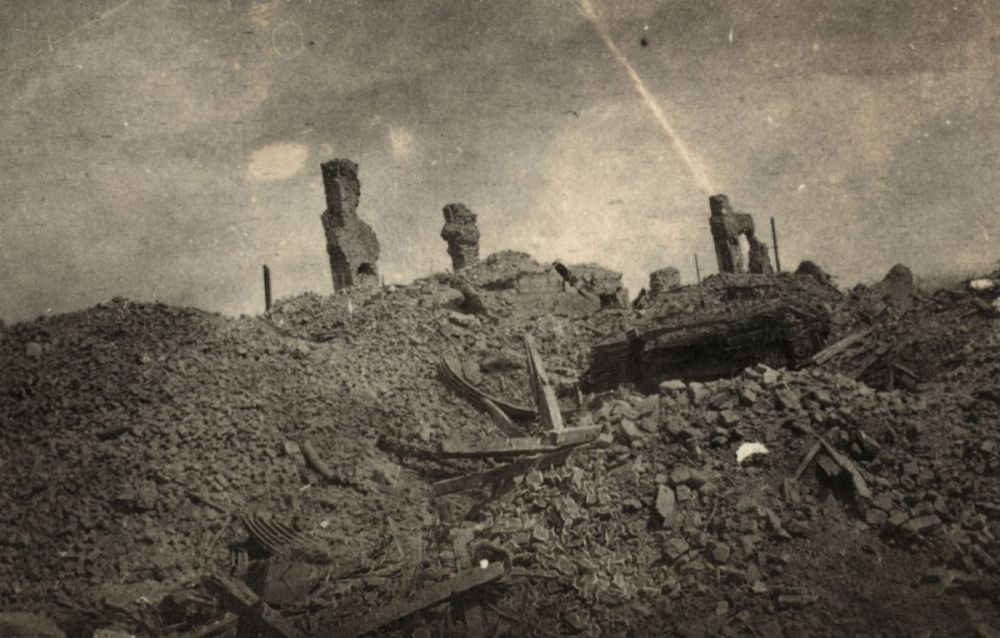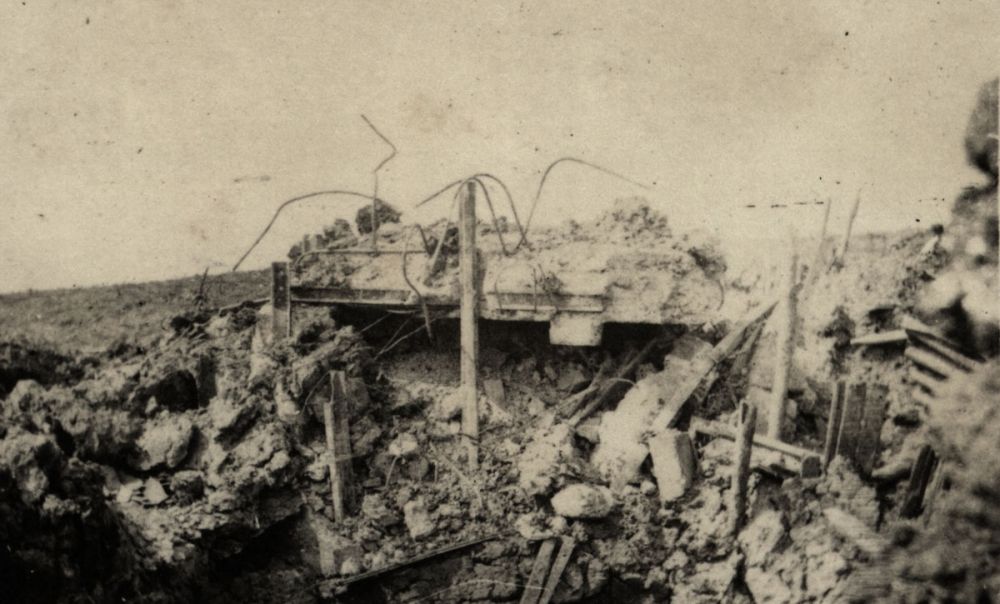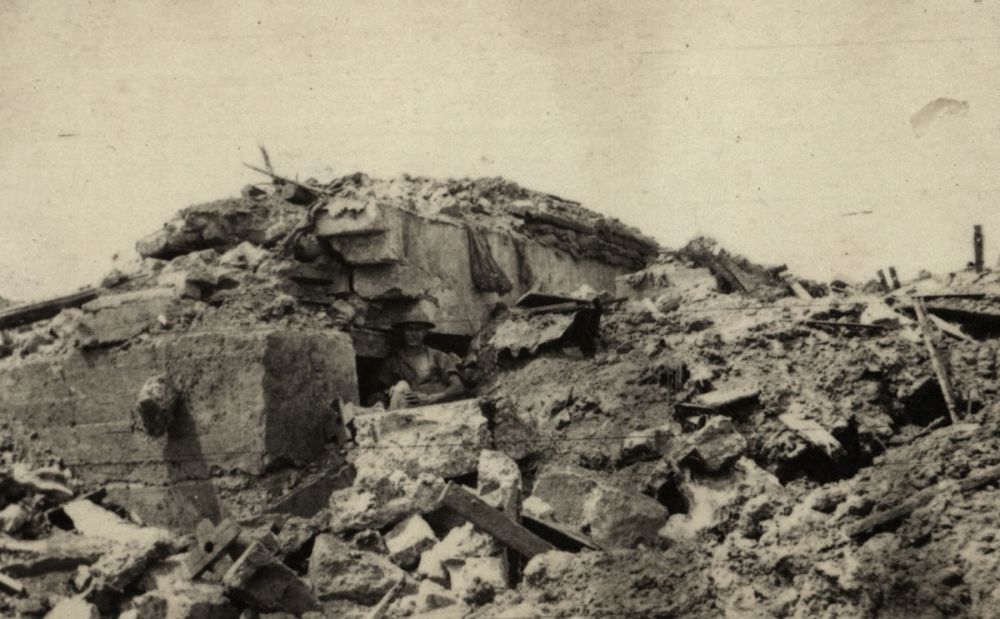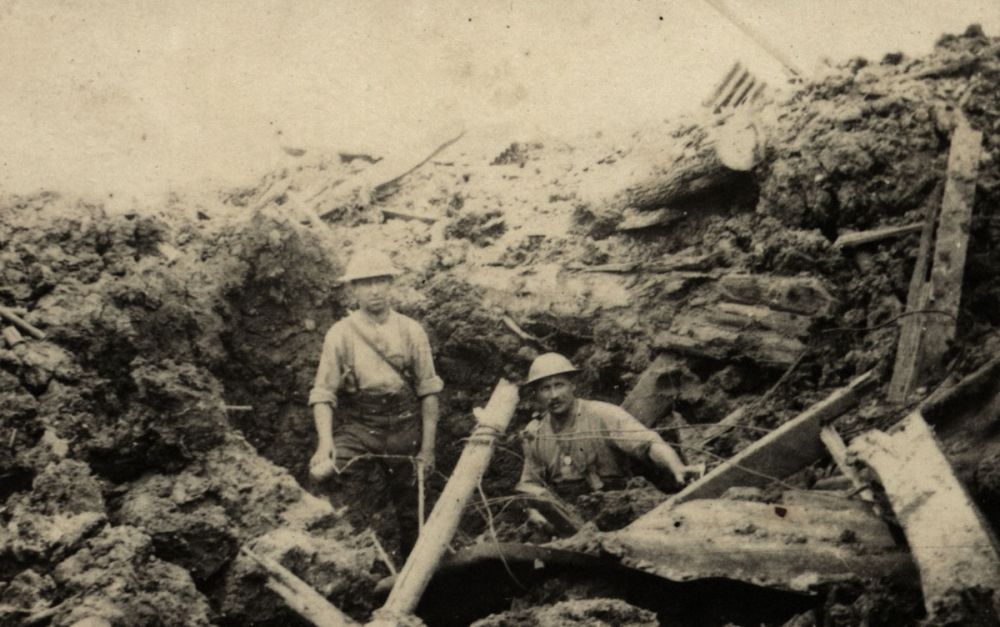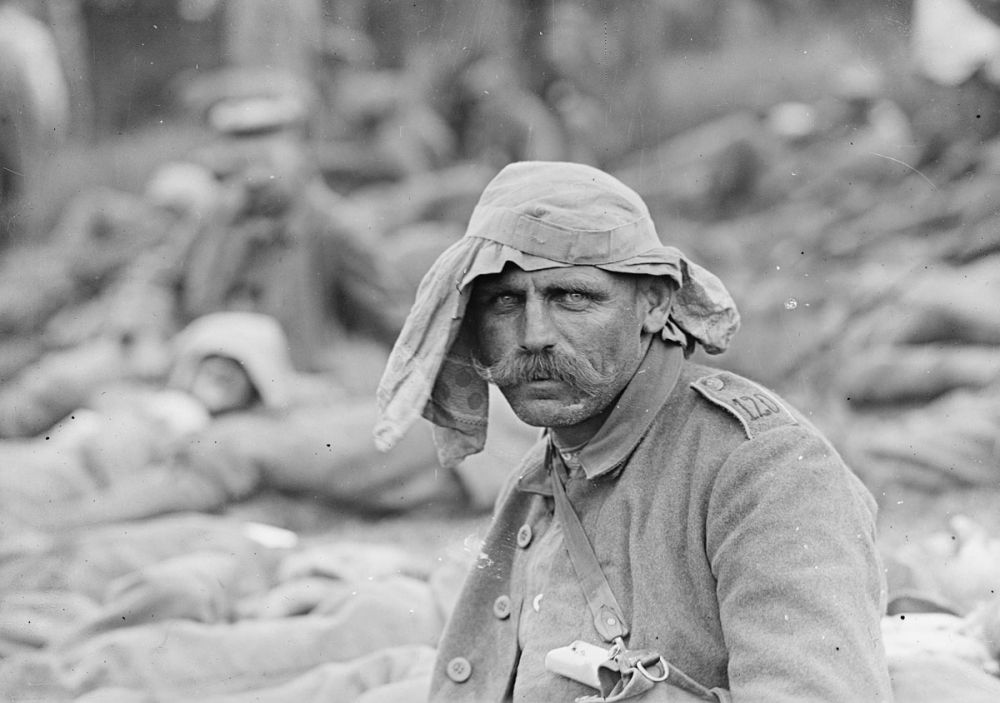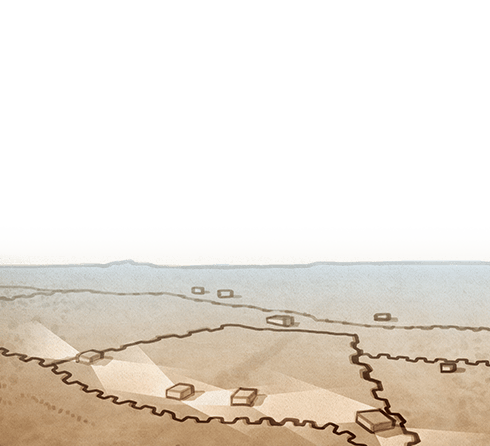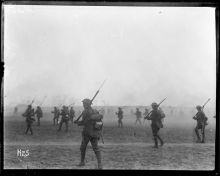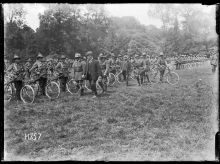Cabaret au Bon Fermier
You’re standing on the corner of New Zealand Straat and Armentières Straat - looking up Armentières Straat to the village of Messines. This was the centreline of the New Zealand Division’s attack. Behind you, further down New Zealand Straat is the New Zealand Memorial, and you are standing alongside one of the first strongpoints that they ran into, the former public house Cabaret au Bon Fermier, which had been converted into a bunker.
The 2nd Brigade were on the left and the Rifle Brigade on the right, and this road was the divider between the two attacking brigades of New Zealand infantry. On the morning of the 7th - even though it’s not first light - roughly 4.30 in the morning - the New Zealanders were fighting their way forward through a maze of ruined buildings and shell craters, some five or six metres deep. It was the 1stCanterburys that engaged this strongpoint here storming it. They grenaded the entrance to the dugouts and the German garrison surrendered, giving up their machine guns.
The New Zealanders then fought their way through the rest of the town. There were some 200 buildings in the town, each with cellars, and these had all been turned into a strongpoint for defending. The town itself was a wasteland, a chaotic mess of broken rubble with hardly any buildings standing. The New Zealanders continued fighting cellar to cellar, grenading or bayoneting its defenders, taking prisoners, and then moving on.
If you look down the Armentières road to your right, onto the lower ground, you can imagine the Australians there - three of the mines had exploded in their sector and they advanced rapidly through the area, clearing a path on the New Zealanders' right.


